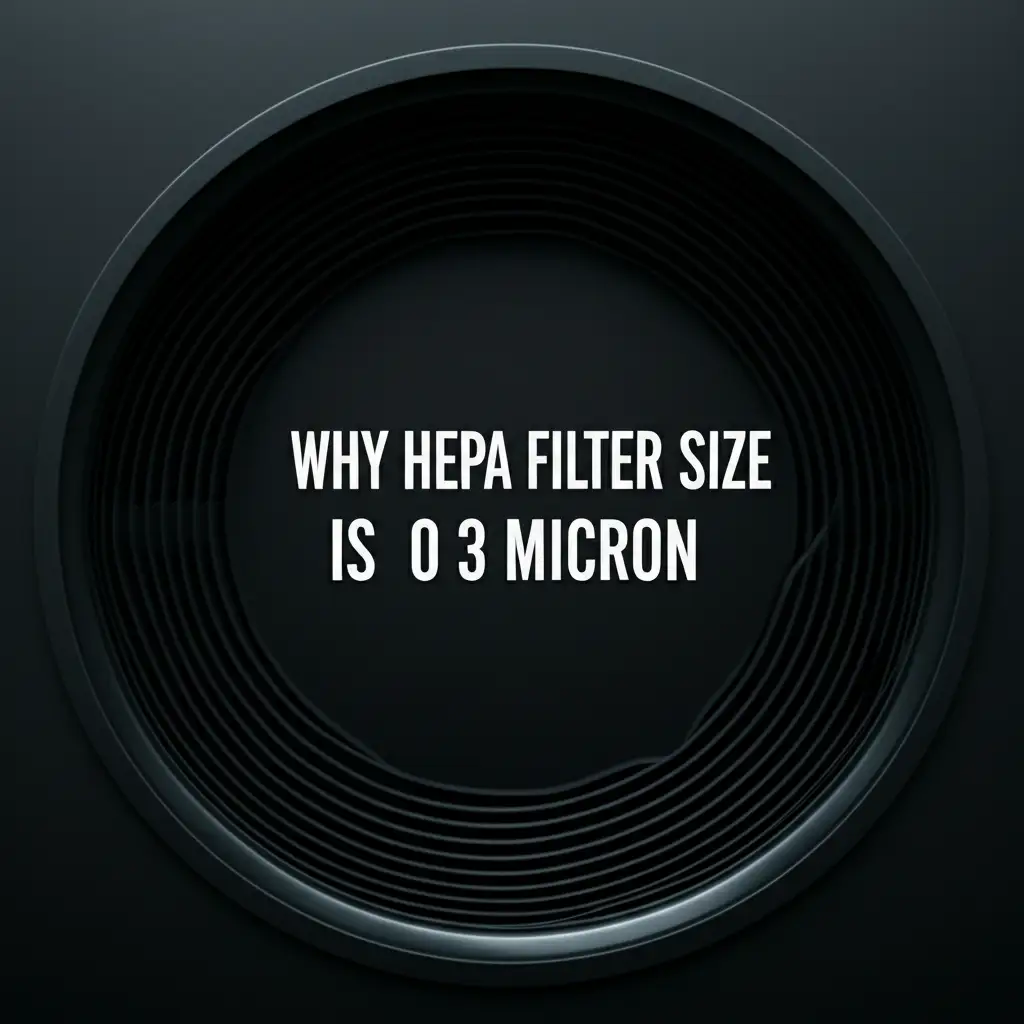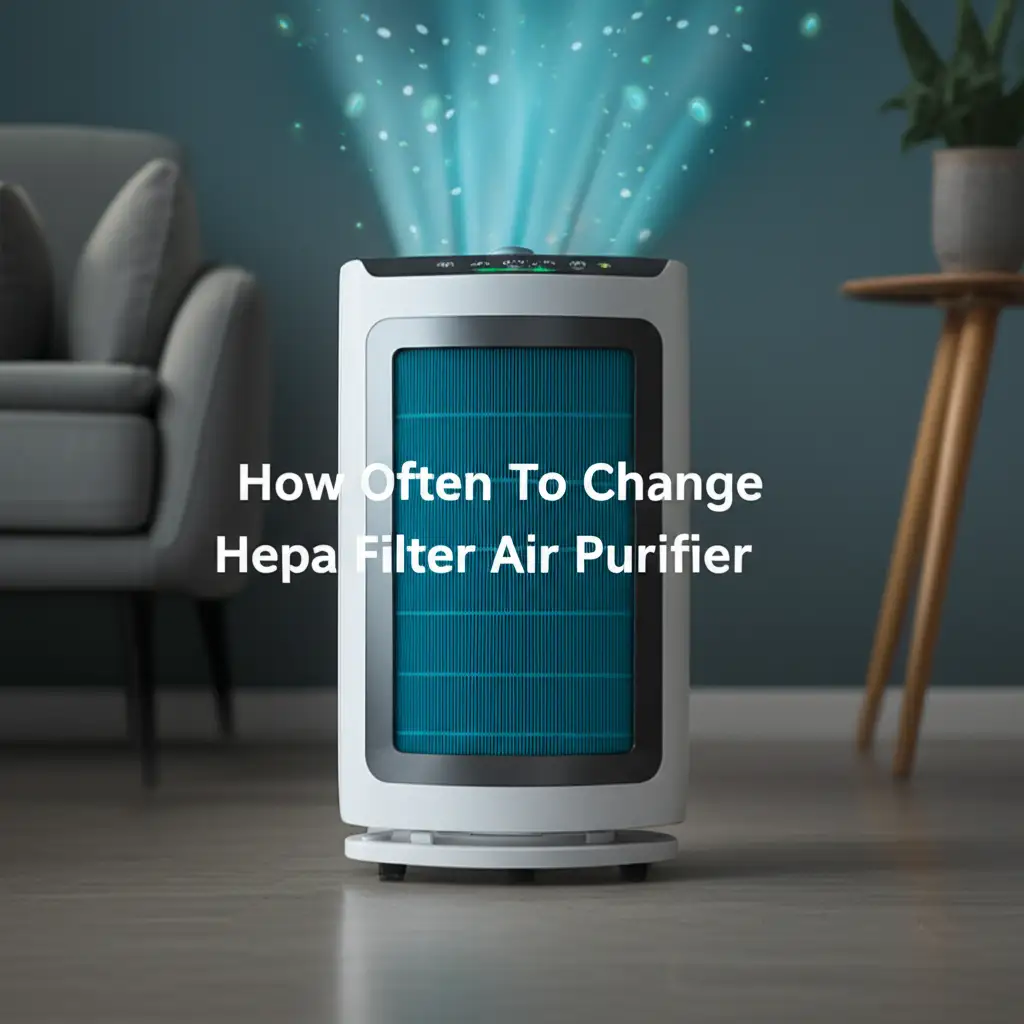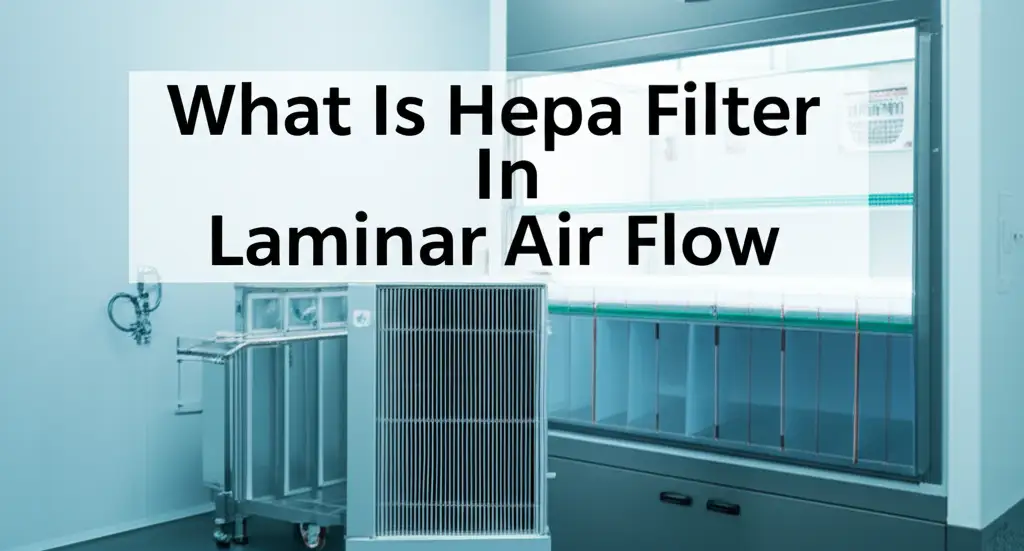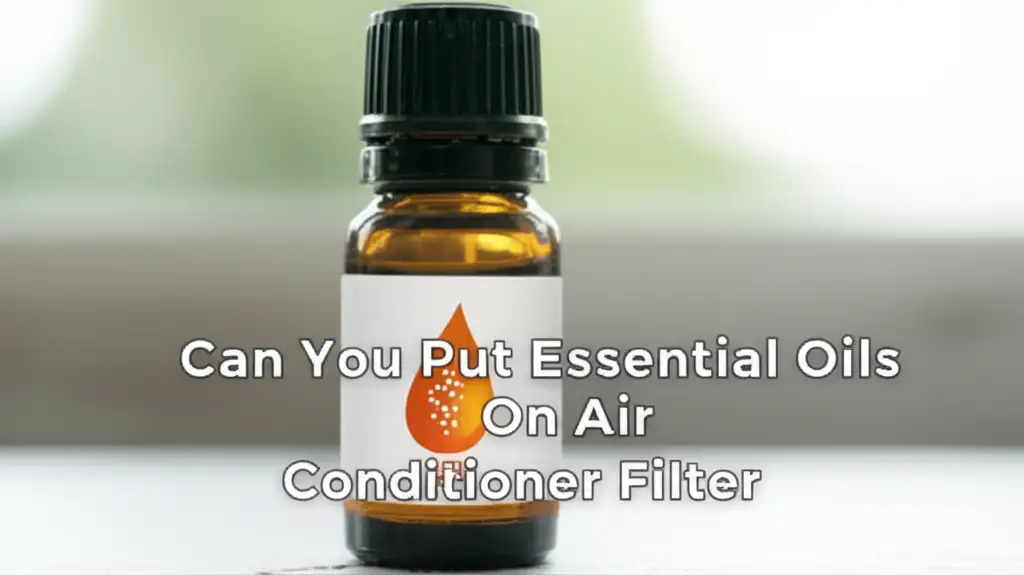· Katria Melrose · Air Quality · 12 min read
Why Hepa Filter Size Is 0 3 Micron

Why Hepa Filter Size Is 0.3 Micron for Clean Air
Have you ever wondered why HEPA filters are so effective? Many people know HEPA filters are good for air quality. But fewer understand the science behind their specific design. The core of their effectiveness lies in a very specific number: 0.3 micron. This particular size is not random. It is crucial for ensuring truly clean air in your home.
This article explains why the HEPA filter size is 0.3 micron. We will explore the science of particle capture. We will look at how these filters achieve such high efficiency. You will learn about the “Most Penetrating Particle Size” and its importance. We will also discuss the health benefits of this standard. By the end, you will understand the critical role of the 0.3 micron standard in protecting your indoor environment.
Takeaway:
- 0.3 micron is the Most Penetrating Particle Size (MPPS): Particles of this size are the hardest for filters to capture.
- HEPA filters are incredibly efficient: They trap 99.97% of particles at 0.3 microns.
- Multiple capture mechanisms work together: HEPA filters do not just act like a sieve; they use impaction, interception, and diffusion.
- This standard ensures comprehensive air purification: It effectively removes common indoor pollutants, allergens, and airborne pathogens.
- Proper maintenance is key: Regular filter checks and replacements keep your HEPA filter working its best.
The 0.3 micron HEPA filter standard exists because particles of this size, known as the Most Penetrating Particle Size (MPPS), are the hardest for filters to trap. Smaller and larger particles are captured more easily by different filtration mechanisms. Achieving 99.97% efficiency at 0.3 microns guarantees comprehensive air purification.
Understanding the HEPA Standard: What 0.3 Micron Really Means
The term HEPA stands for High-Efficiency Particulate Air. It is not a brand name. HEPA describes a filter standard. This standard requires the filter to remove at least 99.97% of particles from the air. These particles must be 0.3 microns in diameter. This precise measurement is a cornerstone of air purification technology.
Many people think filters work like a sieve. They imagine tiny holes catching bigger particles. HEPA filters do not work simply by size exclusion. Their fibers are much larger than 0.3 microns. The magic happens through a combination of physics. These mechanisms capture particles of all sizes, including the most challenging ones.
The 0.3 micron size is crucial. It represents the “Most Penetrating Particle Size” (MPPS). This concept is central to understanding HEPA filter effectiveness. Particles larger or smaller than 0.3 microns are easier to capture. This might seem counterintuitive at first. I will explain why this is the case in the next section.
Meeting the 0.3 micron standard means a HEPA filter offers superior protection. It can trap a wide range of airborne contaminants. These contaminants include dust, pollen, pet dander, mold spores, and even some bacteria and viruses. This level of filtration is essential for healthy indoor air quality.
The Science of MPPS: Why 0.3 Microns Are Tricky
Let me explain why 0.3 microns are so unique. It relates to a concept called the Most Penetrating Particle Size (MPPS). Filters are very good at catching large particles. They simply hit the filter fibers and stick. Filters are also very good at catching very small particles. These tiny particles move randomly. They often collide with filter fibers and get caught.
But what about particles in the middle? Particles around 0.3 microns are a problem. They are too small to be caught easily by direct impaction. They are also too large to move randomly enough for effective diffusion. This means they can slip through the filter more easily. This is why 0.3 microns is the hardest size to capture.
Think of it like this: Larger particles act like a car trying to drive through a dense forest. They quickly hit a tree. Smaller particles act like tiny flies. They dart around quickly and randomly hit branches. Particles near 0.3 microns are like a person trying to walk through the forest. They might weave around trees for a longer time before hitting one.
Because 0.3 microns is the MPPS, the HEPA standard focuses on it. A filter that can capture 99.97% of these tricky particles ensures high efficiency across the entire spectrum of particle sizes. This makes HEPA filters incredibly effective for removing most common airborne pollutants.
How HEPA Filters Work: Beyond Just Mesh Size
HEPA filters capture particles using three main mechanisms. These mechanisms are impaction, interception, and diffusion. Each mechanism plays a role in capturing particles of different sizes. This combination ensures high efficiency, even for the most penetrating particle size (MPPS). It is not about simply passing air through tiny holes.
First, impaction captures larger particles. These particles are too heavy to follow the air stream around a filter fiber. They hit the fiber directly and stick to it. Imagine a ball thrown at a wall; it hits the wall. This mechanism is very effective for particles larger than 1 micron.
Second, interception catches medium-sized particles. These particles follow the air stream. But as they pass close to a fiber, their edge touches the fiber. Then they stick. Think of a fly flying close to a spider web; it gets caught. This mechanism is effective for particles between 0.3 and 1 micron.
Third, diffusion captures very small particles. These particles are so tiny that they move randomly within the airflow. This random motion is called Brownian motion. This erratic movement increases their chance of colliding with a filter fiber. They will eventually stick. This mechanism works best for particles smaller than 0.1 micron.
The 0.3 micron particle falls right in the middle. It is too small for efficient impaction. It is too large for efficient diffusion. This is why the HEPA standard focuses on this specific size. A true HEPA filter uses a dense mat of randomly arranged fibers. These fibers create a tortuous path for air. This design maximizes the chances of particles being captured by one of these three mechanisms. This complex fiber structure helps the filter maintain its high efficiency over time. Knowing when to check or replace your filter is important for continued effectiveness. You can learn more about this by reading How to tell when HEPA filter needs to be replaced.
The Importance of 0.3 Micron Efficiency for Your Health
The ability of HEPA filters to capture 99.97% of 0.3 micron particles has major health benefits. Many common indoor air pollutants fall into or near this size range. These particles can negatively affect your respiratory system. Breathing cleaner air can reduce health risks.
Consider what is in your air. Dust mites produce allergens. Their droppings are often between 10-40 microns. Pollen grains are typically 10-100 microns. Pet dander is usually 2.5-10 microns. Mold spores range from 1-20 microns. All these particles are larger than 0.3 microns. If a filter can catch the hardest-to-catch particles, it will easily catch these larger ones.
Even smaller threats exist. Bacteria are generally 0.3-10 microns in size. Some viruses can be as small as 0.003 microns, but they often attach to larger particles or droplets. These particles are between 0.3 and 10 microns. HEPA filters are very good at trapping them. This includes airborne droplets that might carry viruses.
By removing these tiny contaminants, HEPA filters significantly improve indoor air quality. This is especially vital for people with allergies, asthma, or other respiratory conditions. Cleaner air reduces symptoms and improves overall well-being. It creates a healthier home environment for everyone living there.
Comparing HEPA to Other Filter Types (MERV Ratings)
HEPA filters are a gold standard. However, other filters also exist. They have different efficiency ratings. MERV (Minimum Efficiency Reporting Value) is a common rating system. It helps you compare the effectiveness of different filters. Understanding MERV ratings helps you choose the right filter for your needs.
MERV ratings range from 1 to 20. Higher MERV ratings mean better filtration. A MERV 1 filter offers very basic filtration. It might only capture large dust particles. A MERV 16 filter is very efficient. It captures very small particles. Most residential HVAC systems use filters between MERV 8 and MERV 13.
Here is a simple breakdown:
- MERV 1-4: Captures lint, dust mites, pollen. Basic protection.
- MERV 5-8: Captures mold spores, pet dander, cement dust. Good for general residential use.
- MERV 9-12: Captures lead dust, auto emissions, humidifier dust. Better for allergy sufferers.
- MERV 13-16: Captures bacteria, smoke, sneeze droplets, viruses. Near HEPA-level efficiency. Used in hospitals and clean rooms.
- MERV 17-20: Equivalent to HEPA. Used in specialized environments like operating rooms.
A true HEPA filter has an efficiency equivalent to MERV 17-20. It meets the strict 99.97% capture rate for 0.3 micron particles. Most residential HVAC systems cannot handle true HEPA filters. The dense material can restrict airflow too much. This can damage your system. Standalone air purifiers with HEPA filters are a great solution for homes. They provide high-level filtration without straining your HVAC.
Maintaining Your HEPA Filter for Optimal Performance
HEPA filters are powerful tools for clean air. But they do need proper care to work best. Filters get dirty over time. They collect all the particles they remove from the air. A dirty filter becomes less effective. It can also restrict airflow. Knowing how to maintain your HEPA filter is key to its longevity and efficiency.
Most HEPA filters are not washable. Trying to wash them can damage the delicate fiber structure. This destroys their ability to capture tiny particles. Always check your filter’s instructions. If it is a true HEPA filter, you will likely need to replace it. Some pre-filters or carbon filters might be washable.
The lifespan of a HEPA filter depends on several factors. These include air quality in your home and how often you use the air purifier. High levels of pet dander or smoke can shorten a filter’s life. Generally, HEPA filters need replacement every 6 to 12 months. Some larger units might last longer. You can often check the filter’s condition visually. It will look discolored or clogged. Replacing the filter on time ensures your air purifier continues to provide clean air. For specific guidance on cleaning, you might find this article helpful: How to clean HEPA filter.
Ignoring filter maintenance has downsides. Airflow can decrease. Your air purifier might work harder. This uses more energy. More importantly, it will not clean the air effectively. Particles might pass through a clogged filter. Regular maintenance keeps your investment working properly. It also protects your health.
Choosing the Right HEPA Filter for Your Needs
Selecting the correct HEPA filter depends on your specific situation. Consider the size of your room. Look at your air quality concerns. Think about the type of device you need. Not all filters labeled “HEPA-type” are true HEPA filters. Always check the specifications.
First, identify your primary air quality concerns. Do you have allergies? Are there pets in your home? Is smoke an issue? For severe allergies or respiratory conditions, a true HEPA filter is a must. It provides the highest level of particle capture. If you only need general dust removal, a filter with a good MERV rating might suffice.
Second, think about the device. For whole-home filtration, consider HVAC system filters. But remember, most HVAC systems cannot handle true HEPA filters. A good alternative is a standalone air purifier with a true HEPA filter. These devices are designed to push air through dense HEPA media. They often include additional filter layers. For example, many air purifiers use a carbon filter alongside the HEPA filter. The carbon filter removes odors and gases. This is a common question, and you can learn more about the order of these filters here: Does carbon filter go before or after HEPA filter.
Finally, check the filter’s certified efficiency. Look for “True HEPA” or “HEPA-certified.” This ensures it meets the 99.97% efficiency at 0.3 microns standard. Some “HEPA-type” filters might only capture 99% or less. They are not the same. Invest in a certified HEPA filter for peace of mind. It ensures you get the clean air you need.
FAQ Section
What makes 0.3 microns the most challenging particle size for HEPA filters?
Particles at 0.3 microns are the Most Penetrating Particle Size (MPPS). They are too small for efficient direct impaction with filter fibers. They are also too large to exhibit significant Brownian motion, which aids in diffusion capture of ultra-fine particles. This unique balance means they are the hardest for a filter to catch.
Can HEPA filters capture particles smaller than 0.3 microns?
Yes, HEPA filters are very effective at capturing particles smaller than 0.3 microns. This is due to the diffusion mechanism. Very tiny particles move erratically within the airflow. This random movement increases their chances of colliding with and sticking to filter fibers. The 0.3 micron standard ensures high efficiency across all sizes.
How often should I replace my HEPA filter?
Most HEPA filters need replacement every 6 to 12 months. This timeframe can change. It depends on factors like air quality in your home, how often you use the filter, and the presence of pets or smokers. Always check the manufacturer’s recommendations for your specific air purifier model.
Are all filters labeled “HEPA” the same?
No, not all filters labeled “HEPA” are the same. A true HEPA filter must meet the 99.97% efficiency standard for 0.3 micron particles. Some products use terms like “HEPA-type” or “HEPA-like.” These filters may not meet the true HEPA standard. Always look for “True HEPA” or “HEPA-certified” to ensure proper filtration.
Do HEPA filters remove odors and gases?
HEPA filters are excellent at removing airborne particles. They do not remove odors or gases on their own. For odor and gas removal, you need an activated carbon filter. Many air purifiers combine a HEPA filter with an activated carbon filter. This combination provides comprehensive air purification for both particles and chemicals.
Conclusion
Understanding why HEPA filter size is 0.3 micron reveals the impressive science behind clean air. This specific size represents the Most Penetrating Particle Size (MPPS). Filters must meet a rigorous 99.97% efficiency at this level. This ensures they capture a wide range of pollutants. The unique combination of impaction, interception, and diffusion mechanisms makes HEPA filters highly effective for all particle sizes.
This standard is vital for your health. It removes common allergens, dust, mold spores, and even some bacteria and viruses. Integrating true HEPA filtration into your home significantly improves indoor air quality. Remember to maintain your HEPA filter. Regular checks and replacements keep your air purifier working at its best. Choose certified HEPA products for superior performance. Embrace cleaner air and a healthier living environment.





